Inspired by family and the land from which they came, MAIDA was founded in 2017 - a collective of Indigenous and Indo-hispano artists.
![]()
![]()
Marcella Pacheco —
Wool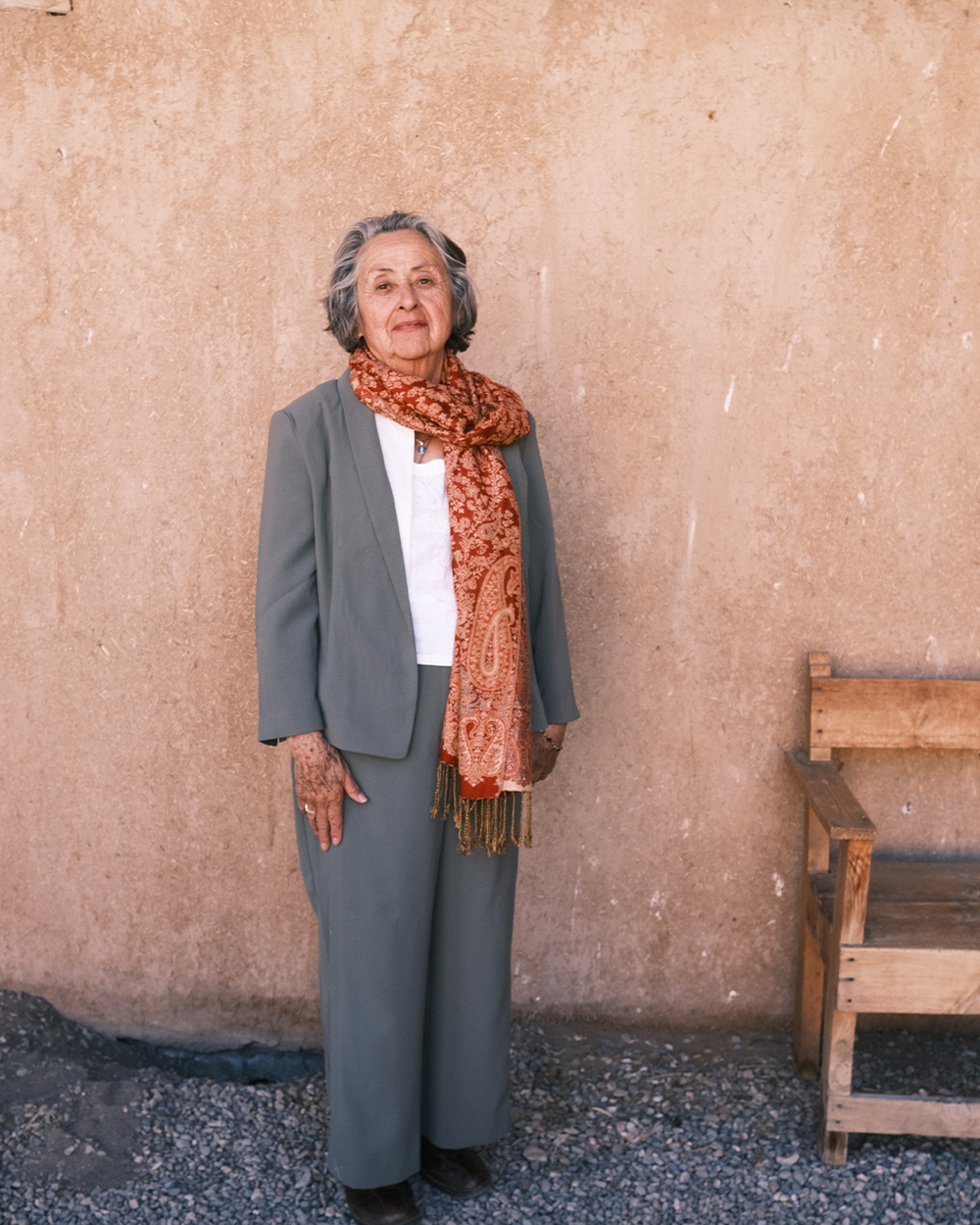
San Luis Valley. colchas, wool, cotton
Marcella Pacheco was born and raised in San Luis, CO - at one time the Colorado and New Mexico border wasn’t so distinct and neither were our cultures, the border didn’t divide and our cultures continue to remain connected. Colcha embroidery became a practice in northern New Mexico and Southern Colorado in the early 1900’s. Wool blankets, rugs, and clothing were common in homes at that time and as a way to mend the moth holes and wear and tear, the practice of embroidery of wool came to be. The colcha stitch is specific to this region and has not been found anywhere except in Romania.
Marcella began colcha work later in life after raising seven children. She has been encouraged and taught by well known colcha advocate Connie Fernandez of Taos. Her designs range from ornate to simplified and abstract dependent on her mood and feeling about the piece. MAIDA is lucky to carry some of her pieces, the first colchera in the MAIDA collective.
Marcella Pacheco was born and raised in San Luis, CO - at one time the Colorado and New Mexico border wasn’t so distinct and neither were our cultures, the border didn’t divide and our cultures continue to remain connected. Colcha embroidery became a practice in northern New Mexico and Southern Colorado in the early 1900’s. Wool blankets, rugs, and clothing were common in homes at that time and as a way to mend the moth holes and wear and tear, the practice of embroidery of wool came to be. The colcha stitch is specific to this region and has not been found anywhere except in Romania.
Marcella began colcha work later in life after raising seven children. She has been encouraged and taught by well known colcha advocate Connie Fernandez of Taos. Her designs range from ornate to simplified and abstract dependent on her mood and feeling about the piece. MAIDA is lucky to carry some of her pieces, the first colchera in the MAIDA collective.
Maryssa Rose Chavez —
Silver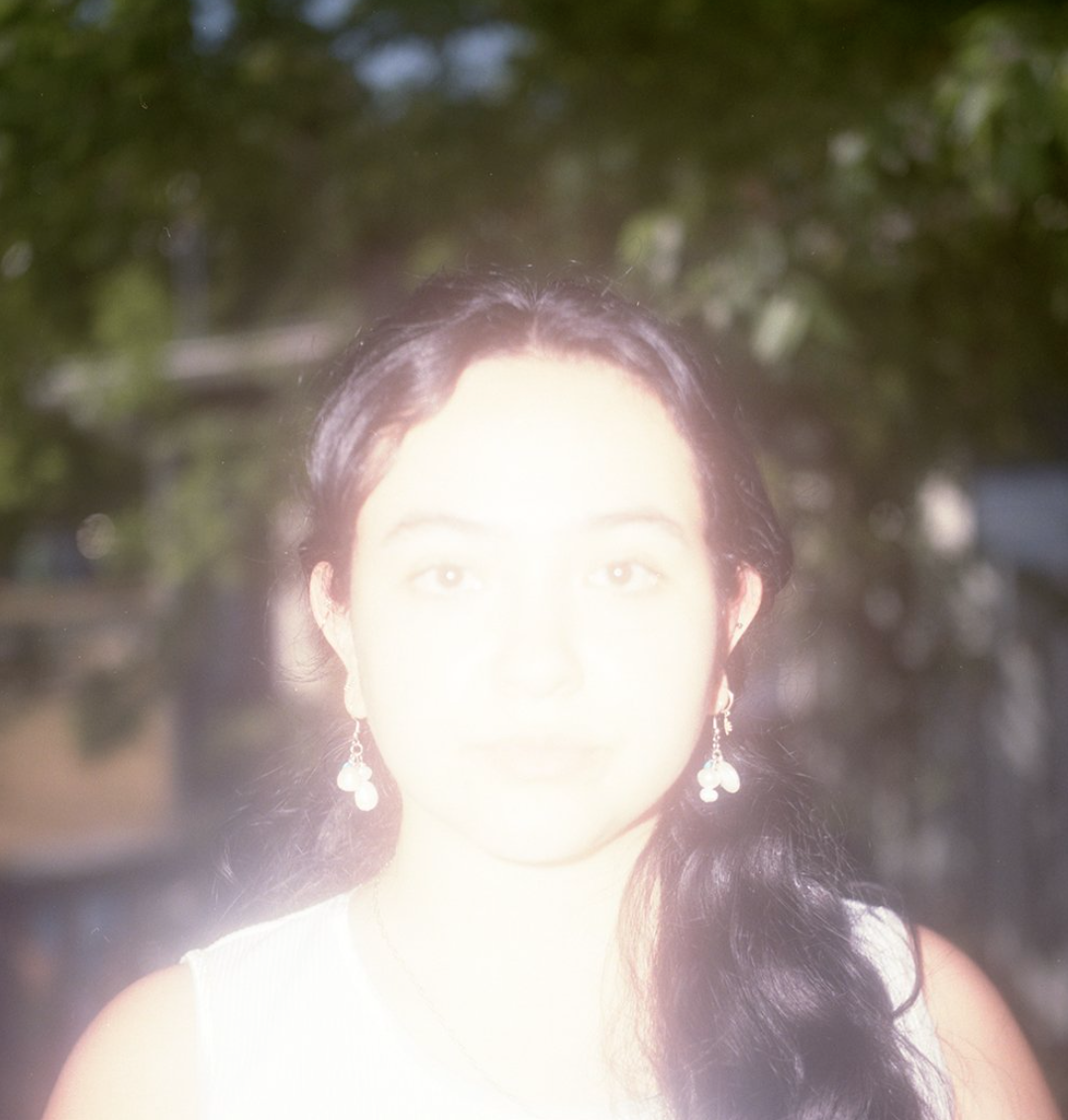
Española, NM. silver, glass, pearl, coral, shell
Maryssa Rose Chavez born and raised in Española, NM is a storyteller, and photographer who uses many mediums to express “an attempt to cure, heal, intervene, and mend, ... issues that extend beyond the personal to the familial, to the ancestral and to notions of deep time connected to the land. “I vividly remember a time with {my grandfather} where we went driving up to Los Alamos, NM and we stopped to take in the view, and he told me, ‘this was all under water once...we in the Española Valley are the ones at the bottom of the ocean.’ This precious moment is not only the point of origin for Maryssa Chavez’ work but also serves as part of the material inspiration for Chavez’ line of wearables of mucho mucho.
Mucho Mucho jewelry consists of handmade necklaces with reclaimed glass beads, shells, pearl, and coral - MAIDA is elated to be able to share her Mother Nature spring collection inspired by her uncle who was fondly nicknamed Mother Nature for his force and energy.
Maryssa created another collection for our ‘a place above the water’ show and collection at The Valley gallery in Taos, NM.
Maryssa Rose Chavez born and raised in Española, NM is a storyteller, and photographer who uses many mediums to express “an attempt to cure, heal, intervene, and mend, ... issues that extend beyond the personal to the familial, to the ancestral and to notions of deep time connected to the land. “I vividly remember a time with {my grandfather} where we went driving up to Los Alamos, NM and we stopped to take in the view, and he told me, ‘this was all under water once...we in the Española Valley are the ones at the bottom of the ocean.’ This precious moment is not only the point of origin for Maryssa Chavez’ work but also serves as part of the material inspiration for Chavez’ line of wearables of mucho mucho.
Mucho Mucho jewelry consists of handmade necklaces with reclaimed glass beads, shells, pearl, and coral - MAIDA is elated to be able to share her Mother Nature spring collection inspired by her uncle who was fondly nicknamed Mother Nature for his force and energy.
Maryssa created another collection for our ‘a place above the water’ show and collection at The Valley gallery in Taos, NM.
Daniel Barela —
Wood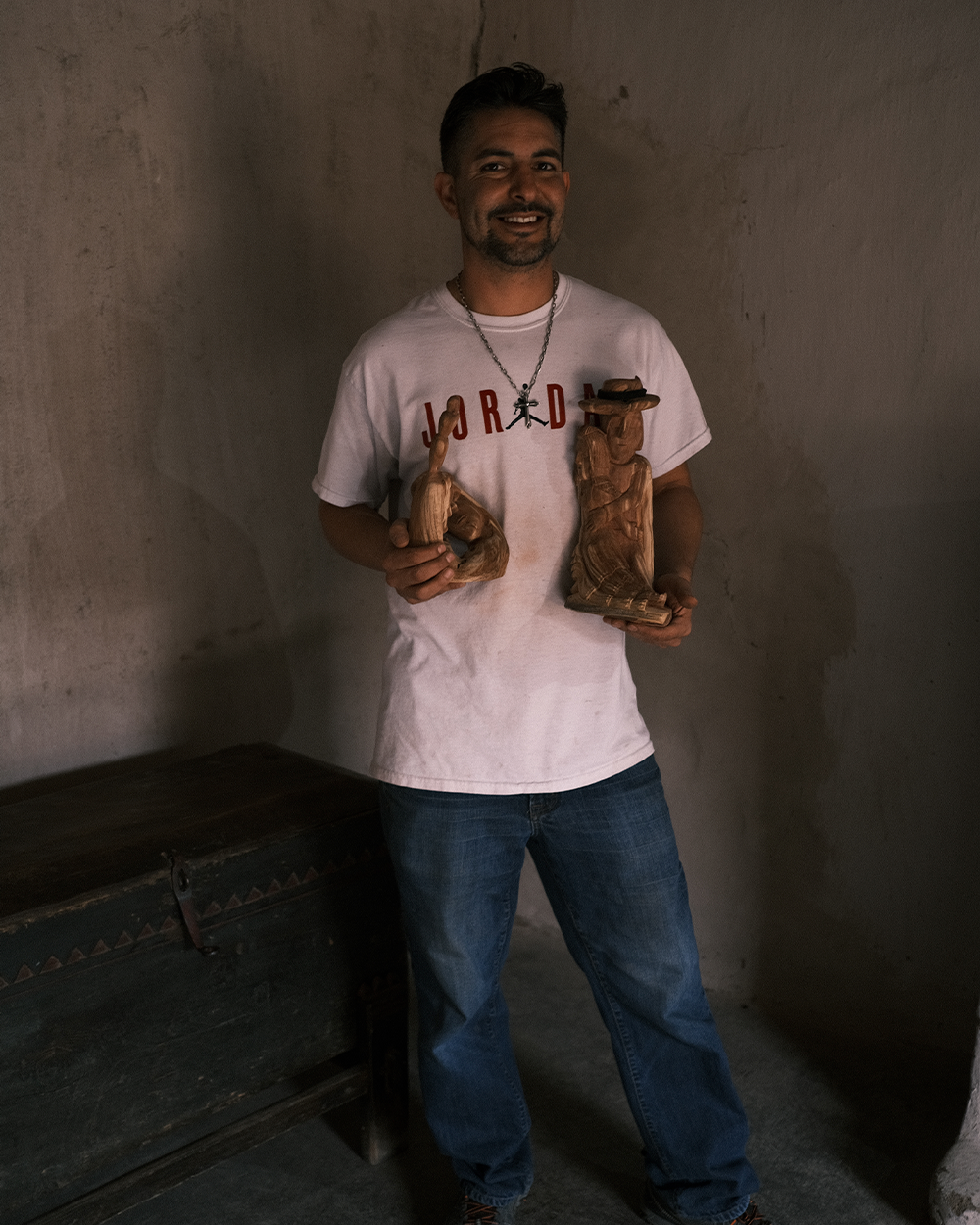
Talpa, NM. local red cedar (rocky mountain juniper)
Daniel Barela is a 4th generation santero, or wood carver. Taught how to carve by his father - Barela grew up in Talpa on his families land in Taos amongst stock piles of cedar wood for carving, collected and tended to for generations. To this day when Barela wants to start a carving, he walks to his families wood pile and looks for pieces with innate movement and a spirit that speaks to him. He then levels the wood, studies it for an hour, or a day, determines what he sees within the wood, and begins to carve what’s already there -
His great-great grandfather was Patriciño Barela, who had a show at the MOMA in the 1930’s, and was named TIME Magazine's "discovery of the year". Daniel began carving at the age of eleven and has been a part of or won at Spanish Market ever since.
MAIDA is so excited to share Barela’s work, as it’s the first santero artist in the collective - santos are a beautiful part of New Mexicos art practice that is alive and well - made from endemic cedar also known as rocky mountain juniper some of the oldest and most sacred trees in our part of the world.
'CON AMOR' is clearly straight from the artists heart, it has valentines celebration and celebrates all things amor.Each piece carved from one single piece of red cedar, keeping the integrity of the wood like his great-grandfather did. From lovers, to parent/child relationships, this sweet collection has so much energy I almost don't want the pieces to leave our home.
Daniel also owns a local barber shop and is the President of the Board of the Taos Historic Musuems which include The Martinez Hacienda and The Blumenschein.
Daniel Barela is a 4th generation santero, or wood carver. Taught how to carve by his father - Barela grew up in Talpa on his families land in Taos amongst stock piles of cedar wood for carving, collected and tended to for generations. To this day when Barela wants to start a carving, he walks to his families wood pile and looks for pieces with innate movement and a spirit that speaks to him. He then levels the wood, studies it for an hour, or a day, determines what he sees within the wood, and begins to carve what’s already there -
His great-great grandfather was Patriciño Barela, who had a show at the MOMA in the 1930’s, and was named TIME Magazine's "discovery of the year". Daniel began carving at the age of eleven and has been a part of or won at Spanish Market ever since.
MAIDA is so excited to share Barela’s work, as it’s the first santero artist in the collective - santos are a beautiful part of New Mexicos art practice that is alive and well - made from endemic cedar also known as rocky mountain juniper some of the oldest and most sacred trees in our part of the world.
'CON AMOR' is clearly straight from the artists heart, it has valentines celebration and celebrates all things amor.Each piece carved from one single piece of red cedar, keeping the integrity of the wood like his great-grandfather did. From lovers, to parent/child relationships, this sweet collection has so much energy I almost don't want the pieces to leave our home.
Daniel also owns a local barber shop and is the President of the Board of the Taos Historic Musuems which include The Martinez Hacienda and The Blumenschein.
Susie Garcia —
Wool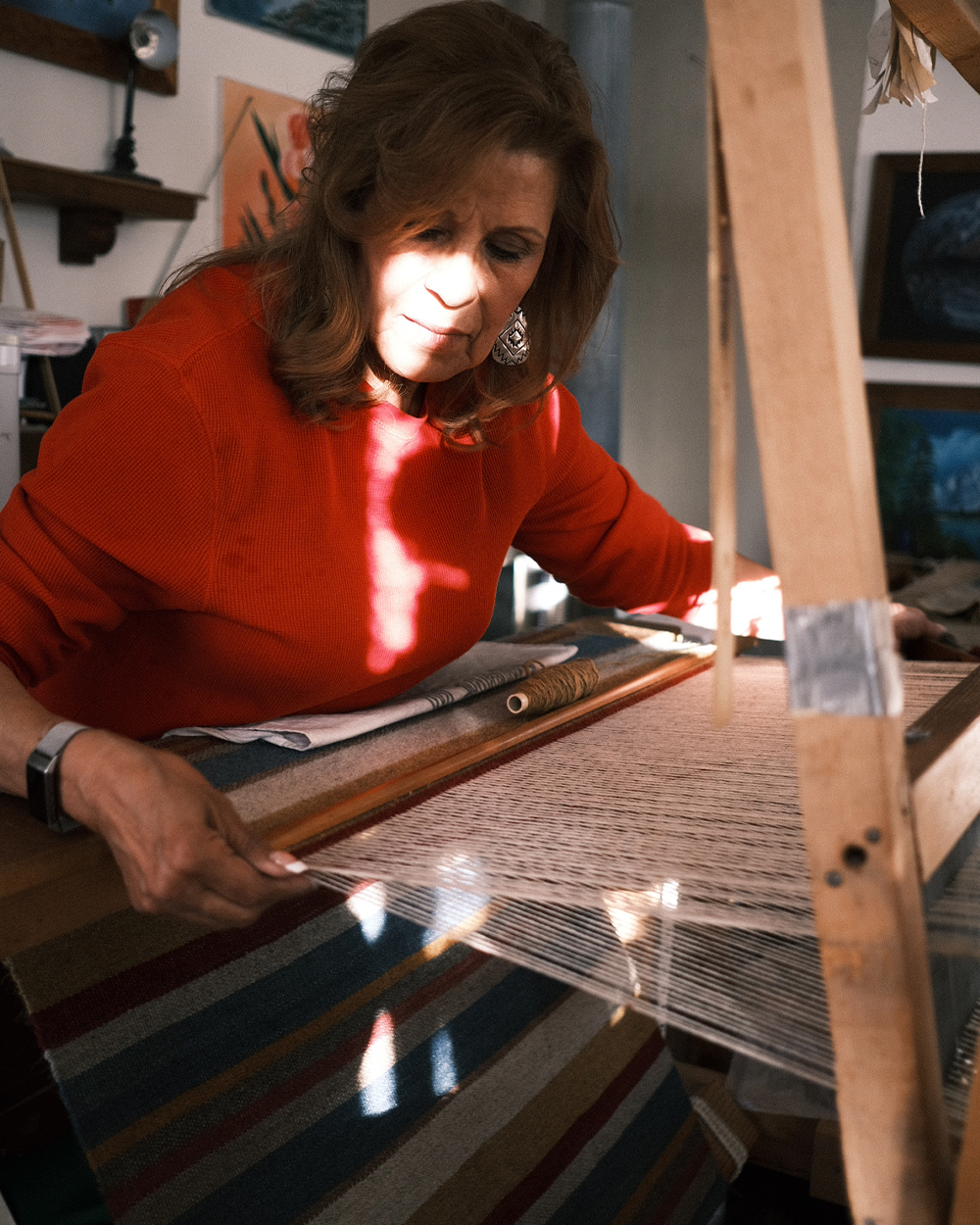
Nambé, NM. churro wool woven on over six different Rio Grande looms.
Susie Garcia has been weaving for over thirty-seven years. Originally from Española, NM - Susie was taught how to weave by the long standing Trujillo weaving family in Chimayo, NM. Susie continues to work for the Trujillo Weaving shop and shows (and wins) at the Spanish Market annually.
MAIDA is lucky to get to collaborate with Susie on specific designs, the first being the Martínez Blanket collection, made with / shed project churro wool, hand-dyed by Maida Branch - with hand picked natural dyes found on her land.
Susie Garcia has been weaving for over thirty-seven years. Originally from Española, NM - Susie was taught how to weave by the long standing Trujillo weaving family in Chimayo, NM. Susie continues to work for the Trujillo Weaving shop and shows (and wins) at the Spanish Market annually.
MAIDA is lucky to get to collaborate with Susie on specific designs, the first being the Martínez Blanket collection, made with / shed project churro wool, hand-dyed by Maida Branch - with hand picked natural dyes found on her land.
Brandon Adriano Ortiz —
Clay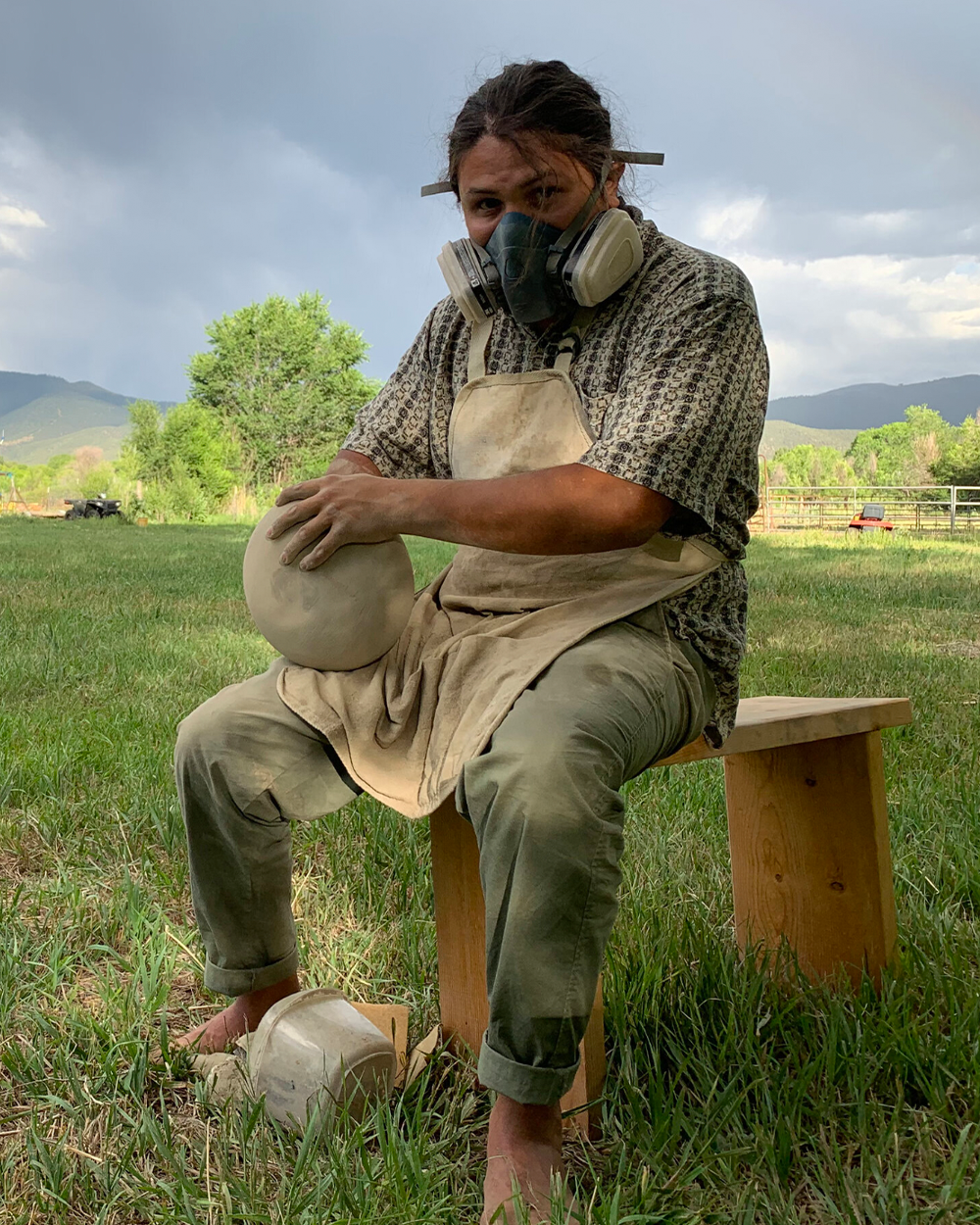
Taos, NM. micaceous clay responsibly harvested near Taos, NM. Pit-fired with local red cedar.
Brandon Adriano Ortiz, originally from Taos and Taos Pueblo works in tradition with micaceous clay he locally forages and pit fires. Brandon often soaks his clay body and slip for months before use, allowing the fermentation to support the tone and quality of his clay.
A graduate from UNM with a master’s degree in architecture, Brandon applies placemaking modalities to his clay practices as well to his visions of communal spaces in New Mexico, always coming back to Indigenous tradition and ethos of who he is and where he is from.
Maida is honored to be a place where some of the work of Brandon’s is shared and celebrated.
‘Ephemeral Narratives: Design Considerations for a Future Past’ in The Avery Review
Brandon Adriano Ortiz, originally from Taos and Taos Pueblo works in tradition with micaceous clay he locally forages and pit fires. Brandon often soaks his clay body and slip for months before use, allowing the fermentation to support the tone and quality of his clay.
A graduate from UNM with a master’s degree in architecture, Brandon applies placemaking modalities to his clay practices as well to his visions of communal spaces in New Mexico, always coming back to Indigenous tradition and ethos of who he is and where he is from.
Maida is honored to be a place where some of the work of Brandon’s is shared and celebrated.
‘Ephemeral Narratives: Design Considerations for a Future Past’ in The Avery Review
Josh Tafoya —
Wool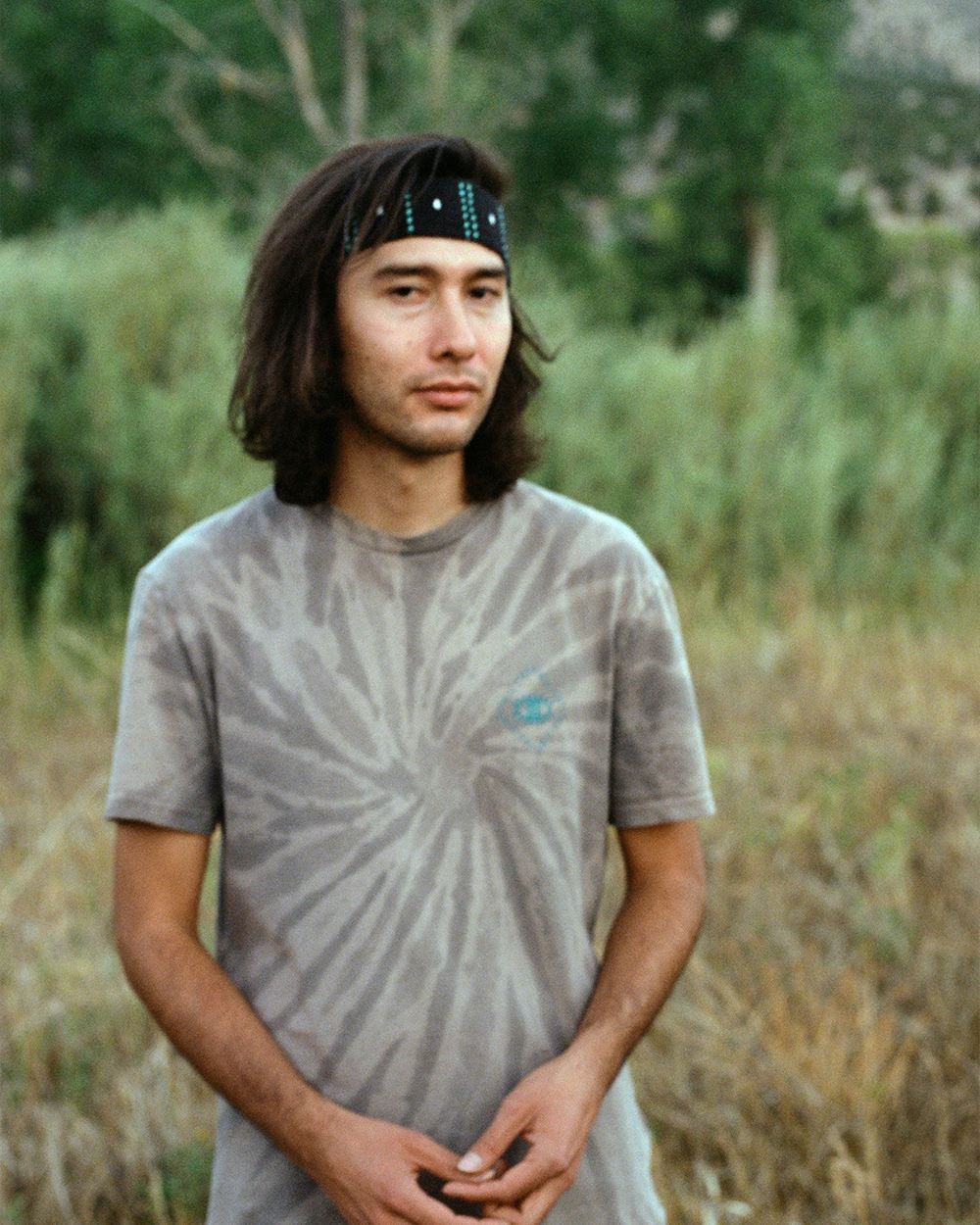
Llano, NM. churro wool, and cotton - hand woven on a Rio Grande loom.
Josh Tafoya, a native Taoseño, is a designer and fiber artist.
Josh began weaving after he and Johnny Ortiz (friends since high school) began working with /Shed churro sheep, spinning and weaving their wool.
Weaving connected him back to a family tradition that hadn’t yet been passed on. Long-standing ranchers and weavers, Josh learned his father grew up building looms for his aunt who ran the Weaving Center in Mora, NM - one of the only wool mills left in the country.
Josh began weaving on a Rio Grande Loom, a gift from his aunt, and now has a body of work, some of which MAIDA is lucky to share with you.
Josh Tafoya, a native Taoseño, is a designer and fiber artist.
Josh began weaving after he and Johnny Ortiz (friends since high school) began working with /Shed churro sheep, spinning and weaving their wool.
Weaving connected him back to a family tradition that hadn’t yet been passed on. Long-standing ranchers and weavers, Josh learned his father grew up building looms for his aunt who ran the Weaving Center in Mora, NM - one of the only wool mills left in the country.
Josh began weaving on a Rio Grande Loom, a gift from his aunt, and now has a body of work, some of which MAIDA is lucky to share with you.
Johnny Ortiz-Concha —
ClayVallecitos, NM. micaceous clay responsibly harvested near Taos, NM. Pit-fired with local red cedar, stone polished, cured with elk marrow and finished in bees wax.
Sold in small batches, and fired on the full moon, all of Johnny’s pieces have a signature black color, a gift from the release of carbon during the firing, and are cured with elk marrow and finished in beeswax. Born and raised in Taos and on Taos Pueblo, Johnny’s pieces carry the magic of the land he is from, tilt them toward the light and see the entire night sky.
Johnny is also the founder of /Shed, “an ongoing meditation on where we live in Northern New Mexico, a celebration of its nature and the fleeting of time.”
short film about his clay practice - Johnny Ortiz / Clay
/Shed
@shed_project
Sold in small batches, and fired on the full moon, all of Johnny’s pieces have a signature black color, a gift from the release of carbon during the firing, and are cured with elk marrow and finished in beeswax. Born and raised in Taos and on Taos Pueblo, Johnny’s pieces carry the magic of the land he is from, tilt them toward the light and see the entire night sky.
Johnny is also the founder of /Shed, “an ongoing meditation on where we live in Northern New Mexico, a celebration of its nature and the fleeting of time.”
short film about his clay practice - Johnny Ortiz / Clay
/Shed
@shed_project
Gino Antonio —
Silver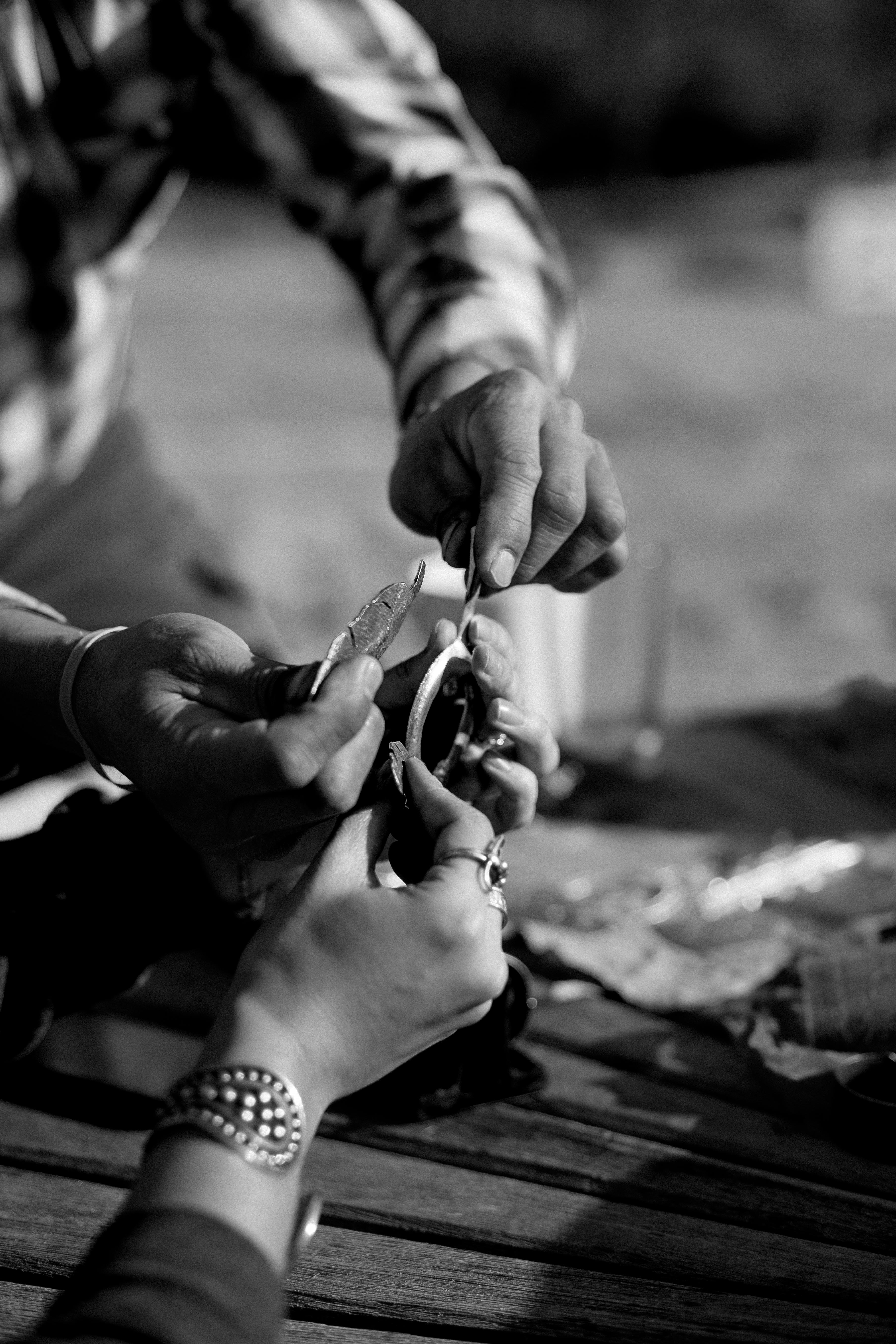
Window Rock, AZ. tufa cast
All of MAIDA’S sterling silver pieces are made in collaboration with Gino Antonio. Gino has inherited two gorgeous practices from his grandfather, silver smithing and horse healing.
Gino blesses each piece with the prayers of that lineage, which you can sense in the strength and power of each. When Gino’s not silver smithing, he’s performing horse blessing ceremonies in the traditional Navajo way.
All of MAIDA’S sterling silver pieces are made in collaboration with Gino Antonio. Gino has inherited two gorgeous practices from his grandfather, silver smithing and horse healing.
Gino blesses each piece with the prayers of that lineage, which you can sense in the strength and power of each. When Gino’s not silver smithing, he’s performing horse blessing ceremonies in the traditional Navajo way.
Camilla Trujillo —
Clay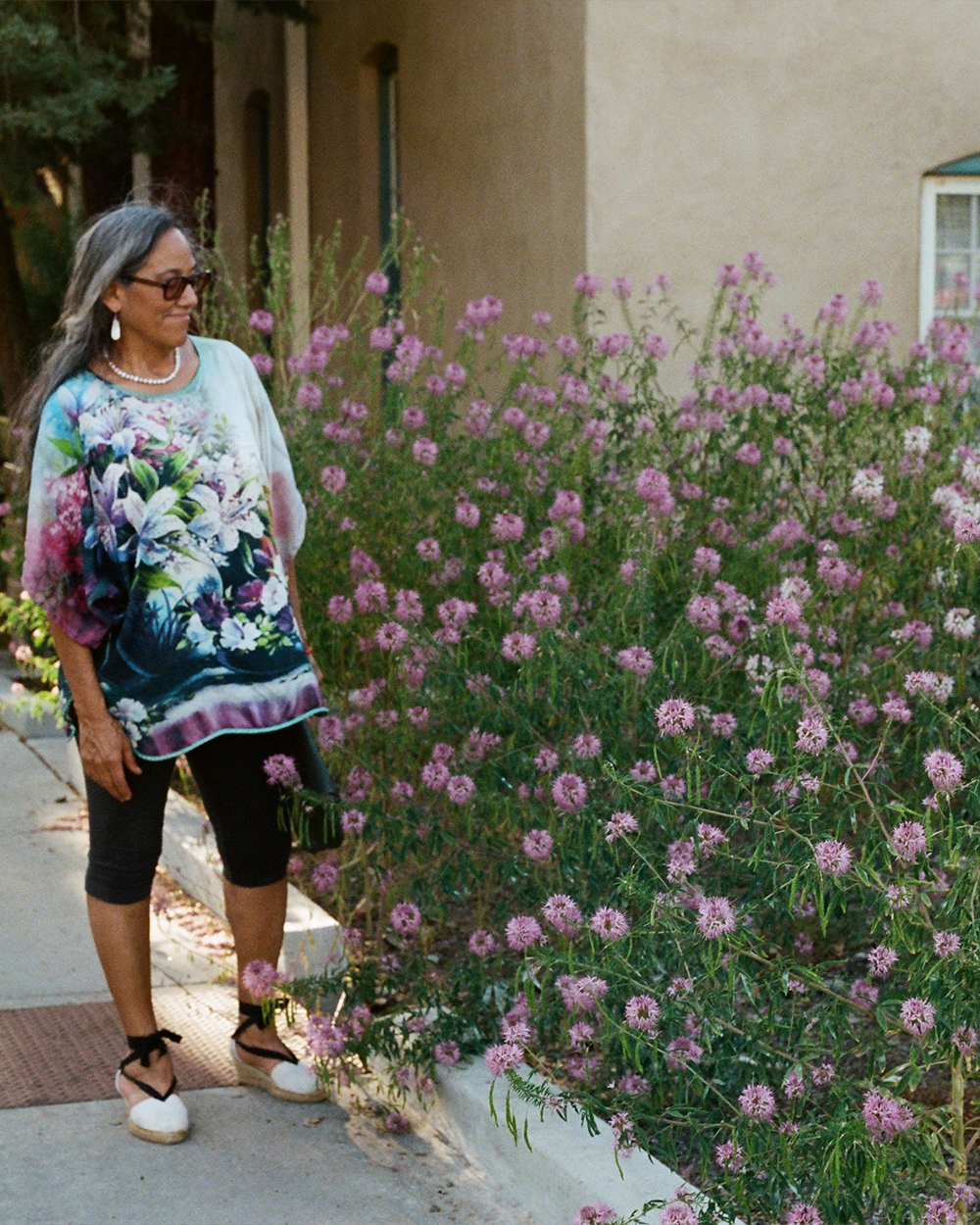
Española, NM., micaceous clay, stone polished or non toxic glaze
Camilla Trujillo has been studying traditional regional pottery techniques for over 30 years.
Taught in Santa Clara traditon, many of Camilla’s designs are based on found pottery from archeological digs in Eastern New Mexico.
Now reproduced in Española, the designs exemplify the mixed ancestry that is the southwest, a combination of Tewa tradition and Spanish Franciscan, dating back to the missions of the 1600’s.
Because modern kilns were not yet in New Mexico, pieces were pit fired and given a stone polish finish with no glaze.
In addition to her clay practice, Camilla makes remedios and healing balms.
Camilla Trujillo has been studying traditional regional pottery techniques for over 30 years.
Taught in Santa Clara traditon, many of Camilla’s designs are based on found pottery from archeological digs in Eastern New Mexico.
Now reproduced in Española, the designs exemplify the mixed ancestry that is the southwest, a combination of Tewa tradition and Spanish Franciscan, dating back to the missions of the 1600’s.
Because modern kilns were not yet in New Mexico, pieces were pit fired and given a stone polish finish with no glaze.
In addition to her clay practice, Camilla makes remedios and healing balms.
